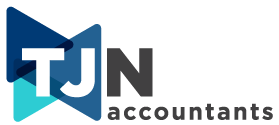Below we have outlined some upcoming changes to employee superannuation obligations and employee data reporting. It is important to check that your payroll software is updated to take into account these changes. Some of these changes will increase your overall employee costs and will need to be taken into account when you are setting your budget for the 2023 financial year.
Superannuation guarantee rate increasing to 10.5%
The superannuation guarantee (SG) rate will increase to 10.5% from 1 July 2022 and will continue to increase by 0.5% each financial year until it reaches 12% on 1 July 2025.
Business impact
The increase in the SG rate can have the following impacts on your business:
- An increase in your superannuation expense – if your employees are paid their super on top of their hourly rate or salary, then an increase in the SG rate will increase your overall superannuation liability.
- An increase in your workcover cost – workcover is calculated on the wages and superannuation that you pay to your employees so an increase in the superannuation rate will increase the total wages declared to workcover.
- A liability to payroll tax – if your business is near the payroll tax threshold, an increase in your superannuation expense may result in you becoming liable to payroll tax.
- An increase to your existing payroll tax liability – if your business is already liable for payroll tax, an increase to your superannuation expense will increase your overall payroll tax liability.
Action to take
To ensure your business takes into account the implications of the increase in the SG rate, we recommend that you:
- Review your employee contracts or awards to determine if their wages include or exclude superannuation;
- Calculate your increased liability for superannuation, workcover and payroll tax and factor this into your business’ budget and cashflow forecasts;
- Review your method of recording and reporting employee superannuation and ensure that the increased rate will be reflected in your reporting system (most online accounting software – Xero, Reckon, MYOB etc – should be automatically updated to take into account the increased rate);
- Ensure you pay your employee superannuation by the relevant due dates (28 July, 28 October, 28 January, 28 April) to avoid a potential 200% penalty for late payment.
$450 monthly wages threshold for superannuation guarantee removed
Prior to 1 July 2022, employers only had to pay super once an employee’s monthly wage exceed $450. From 1 July 2022 employers will be required to make superannuation guarantee contributions to their employee’s super fund regardless of how much the employee is paid.
Single Touch Payroll Phase 2
Single Touch Payroll Phase 2 is an extension to the original Single Touch Payroll reporting system introduced on 1 July 2018. Phase 2 is intended to reduce the reporting burden for employers who need to report information about their employees to multiple government agencies (like Services Australia).
The mandatory start date for Phase 2 reporting is 1 January 2022. However, the ATO is offering a flexible approach to transition by allowing employers who were reporting by 1 March 2022 to be deemed compliance at 1 January 2022.
Digital Service Providers also have the option to apply for a deferred start date. This deferred start date then automatically applies to customers of that provider. For example, Xero has a deferred start date of 31 December 2022 for its customers.
Action to take
Check with your digital service provider to determine their status with regards to the implementation of Single Touch Payroll Phase 2. Please contact us if you employ staff and you are unsure of whether your software is compliant.
DISCLAIMER: The information in this article is general in nature and is not a substitute for professional advice. Accordingly, neither TJN Accountants nor any member or employee of TJN Accountants accepts any responsibility for any loss, however caused, as a result of reliance on this general information. We recommend that our formal advice be sought before acting in any of the areas. The article is issued as a helpful guide to clients and for their private information. Therefore it should be regarded as confidential and not be made available to any person without our consent.

Jeanette has over 20 years experience as an accountant in public practice. She is a Chartered Accountant, registered tax agent and accredited SMSF Association advisor. When she is not helping business owners grow their empires, you will likely find her out running on the trails or at the gym. Book in to see Jeanette today.


